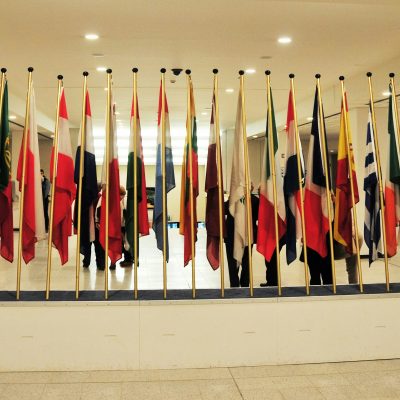NATO Summit and European Defence: 5% of GDP for Defence – What Are We Talking About?

On 19 and 20 May, I had the privilege of participating in Best Talks, a two-day conference organised by the Equilibrium Institute in Budapest on energy and security issues in Europe. The event brought together Europeans and Americans—experts and political representatives alike—to discuss a wide range of topics, from the war in Ukraine to the Indo-Pacific, the arms industry, AI, and the security implications of climate change. One topic that received considerable attention was the U.S. commitment to NATO. A U.S. official, perhaps seeking to reassure, stated that “the United States has never been so committed to NATO and has never invested so much in the war in Ukraine.”
The issue of burden-sharing was also a recurring theme in the discussions. Several American participants stressed that Europeans must increase their defence spending, insisting that the 5% target is non-negotiable. Notably, this topic had already taken centre stage at the preparatory meeting for the upcoming NATO summit, held in Istanbul the previous week, where European participants reportedly endorsed the goal of allocating 3.5% of GDP to defence and 1.5% to security-related spending.
But what are we really talking about? All other things being equal (i.e., assuming no economic growth in Europe in the coming years), reaching 5% of GDP would require European countries to collectively spend more than €850 billion annually—2.5 times the current level of spending. Even reaching 3.5% would demand an additional €270 billion per year, based on data from the European Defence Agency in Brussels.
Even the European Commission’s plan presented in early March (followed by the White Paper), which aims to mobilise €800 billion for defence, falls well short—because it is a multiannual proposal. A project of this scale (5%) would require bold political choices and extremely difficult trade-offs at a time when climate change is accelerating, amplifying both insecurity and inequality, when Europe’s population is ageing, and when the continent is lagging behind in terms of competitiveness and innovation. The political risks are not insignificant: citizens across Europe are increasingly questioning the legitimacy of such high levels of defence spending—even if they recognise the need to step up efforts in this area.
Where does this 5% figure come from, and what does it really represent? It was first mentioned by Donald Trump in early December 2024, in response to a journalist who asked about the 3% target he had proposed during the summer election campaign. When the journalist noted that Europeans had already made considerable progress—approaching the 2% target set in 2014—Trump dismissed these efforts, declaring that 2%, or even 3%, was insufficient and that “at least 5%” was necessary, without offering any further justification. Driven by fears of waning U.S. support for Ukraine or a possible American withdrawal from NATO, European leaders have since begun to align themselves with this figure.
But what does 5% really mean? The SIPRI database, which has tracked military spending since 1966, provides some useful context:
- Apart from France, Greece, and the United Kingdom, no European NATO member has ever allocated 5% of its GDP to defence. During the Cold War, Germany fluctuated between 3% and 4%, Italy between 2% and 3%, and Sweden hovered around 3%.
- France spent 5% of its GDP on defence between 1957 and 1961, then gradually reduced that to around 3.5%.
- Greece exceeded 5% intermittently between 1975 and 1983, then stabilised at around 3.5% in the 1990s and after 2021, and at 2.5% in the 2000s.
- The United Kingdom made the most sustained effort, spending around 6% of GDP until 1966, then gradually declining but still spending over 4% into the early 1990s.
- Canada, though not a European ally, reached 5% in 1957, but only 1.71% by 1979.
- The United States remained above 5% until 1991 (13% in 1953, around 9% throughout the 1960s). While this demonstrates that the U.S. largely financed the defence of its allies, it must be noted that these efforts coincided with its own military engagements in Korea, Vietnam, Afghanistan, and Iraq.
What can we learn from this?
We must be cautious with the increasingly ambitious spending targets being circulated. Defence spending is not without consequences. A more rational approach is urgently needed: spending for what? With what objectives and expected outcomes? Through what instruments and methods?
Every euro must be carefully considered and invested to serve the security of Europeans. Given that resources are far from unlimited, we must reduce industrial and capability fragmentation, and pursue economies of scale based on a European preference and strategic autonomy in order to truly strengthen European defence capabilities. The recent White Paper sets out priority capabilities; now, we must determine the funding required to deliver them.
Faced with complex security challenges and growing uncertainty, Europeans must begin by clearly defining their interests—a well-understood European interest—instead of blindly adhering to a mantra shaped by a leader whose interests and priorities are increasingly distant from their own.




